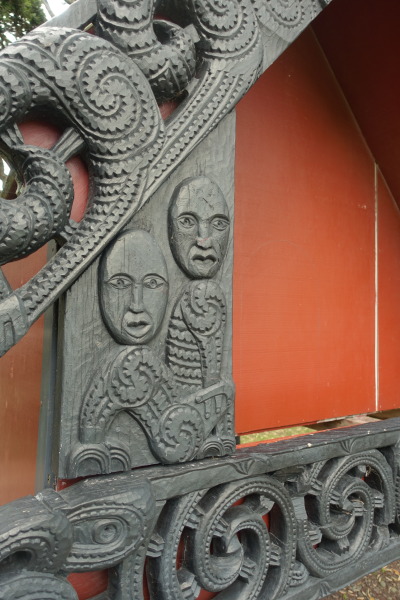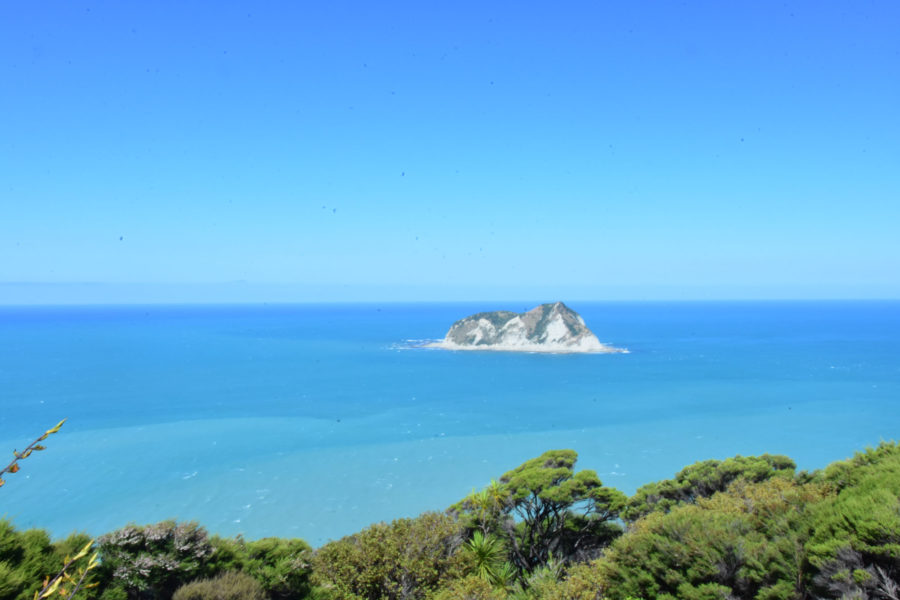In 2016, we cycled around the much forgotten corner of New Zealand, it’s East Cape. This little hump of paradise, adorned with ferns, beaches and wilderness, sits at the bottom of the North Island, and is usually bypassed for the more glamorous western side of the island, with Mount Tarinaki, or the central slopes of the Tongariro crossing. This quiet little back water is one of the places in New Zealand that actually feels ‘off the beaten track’, and I recommend it because of this. It’s also the setting for several famous New Zealand films- “Boy” and “Whale Rider.”
A map of our trip can be seen here; https://drive.google.com/open?id=1gezgQeRwTrOLtq1K9bekhNEyqpw&usp=sharing
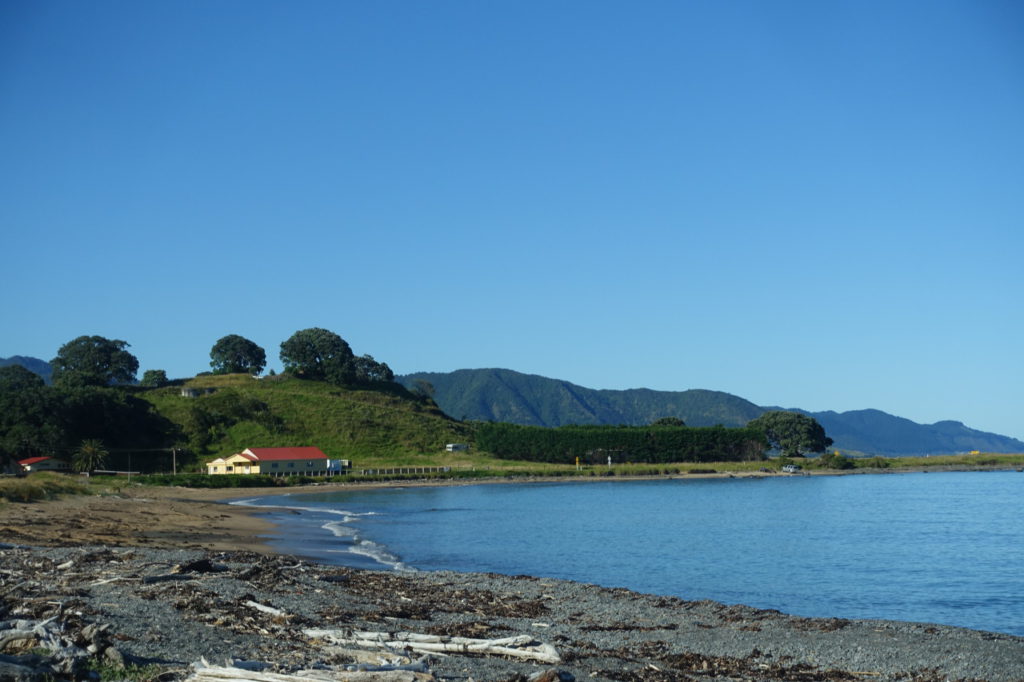
The basis for East Cape’s charm is in how isolated it feels, along with the wilderness that pours from the distant ranges of Raukumara down the empty white beaches. Though not uninhabited, East Cape is dotted with tiny, sleepy hamlets, ramshackle farms, small sleepy churches and Marae- Maroi meeting grounds- which are usually beautifully decorated with carvings, paua shells and red and white paint.
Huge tree ferns sprout out of the hillsides, and flaming pōhutukawa trees flank golden beaches, there is always the calls of Tui and Weka birds among the agapathus. It feels like an area lost in time. There is one main road, Highway 35, that we cycled on most of the time, and it was quiet and empty, dipping and diving over rugged hills and through remote communities.
This trip, we were cycling with a group of about 20 other New Zealanders, most of whom were from the same kayak club at university. They were a fantastic group of people to cycle with- outdoorsy, fun and friendly. They took the cycle touring thing with a pinch of salt- we had support vehicles, which carried all our gear, and whoever couldn’t be bothered to cycle that day and their bikes. More than anything, this meant vast amounts of alcohol could be carried along with us, and that when you got there each day, someone else had set up your tent and got the campfire started, which was an amazing extra benefit.
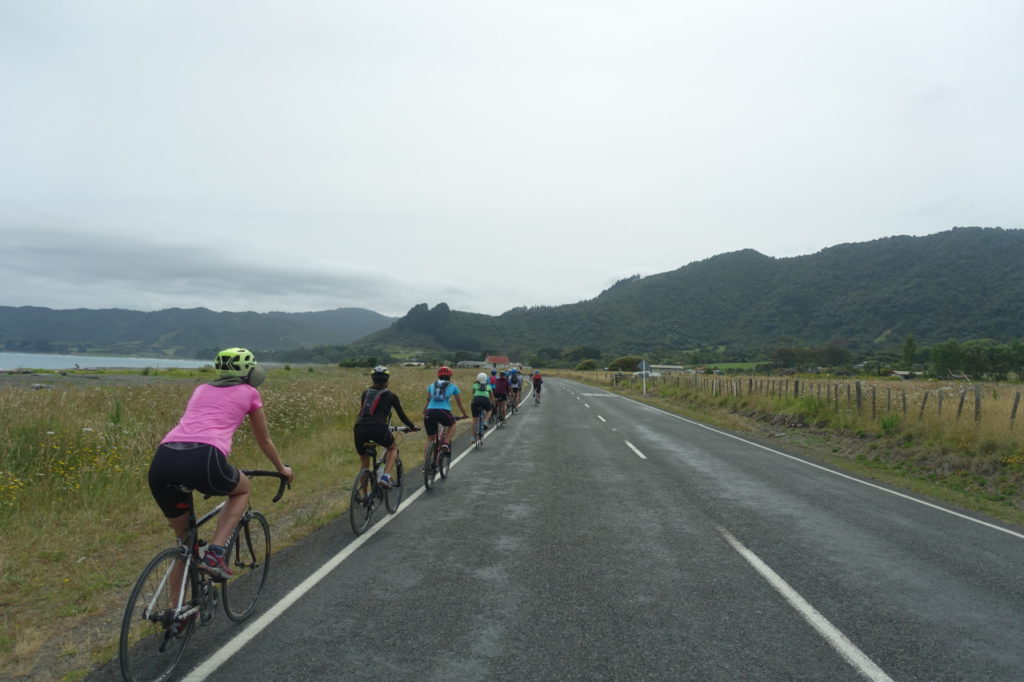
The start of the trip took us from Opotiki out to the Eastern-most point of the Cape.
Though we weren’t doing massive miles, Highway 35 dips and dives over hills, and it was quite tiring. It was beautiful though- you passed rugged, rocky inlets, vibrant green forests bursting with birdsong, and always the deep, blue sea over your shoulder. On the clear days, you could see out to the White Island, a live volcanic island that spouts huge plumes of white stem into the sky. We spent one night in Waihu Bay, the location for filming the Maori film Boy, sleeping in the front yard of a kind person who offered to let us stay when we couldn’t find our camp spot. This easy-going and kind attitude seems typical of the people who live here.
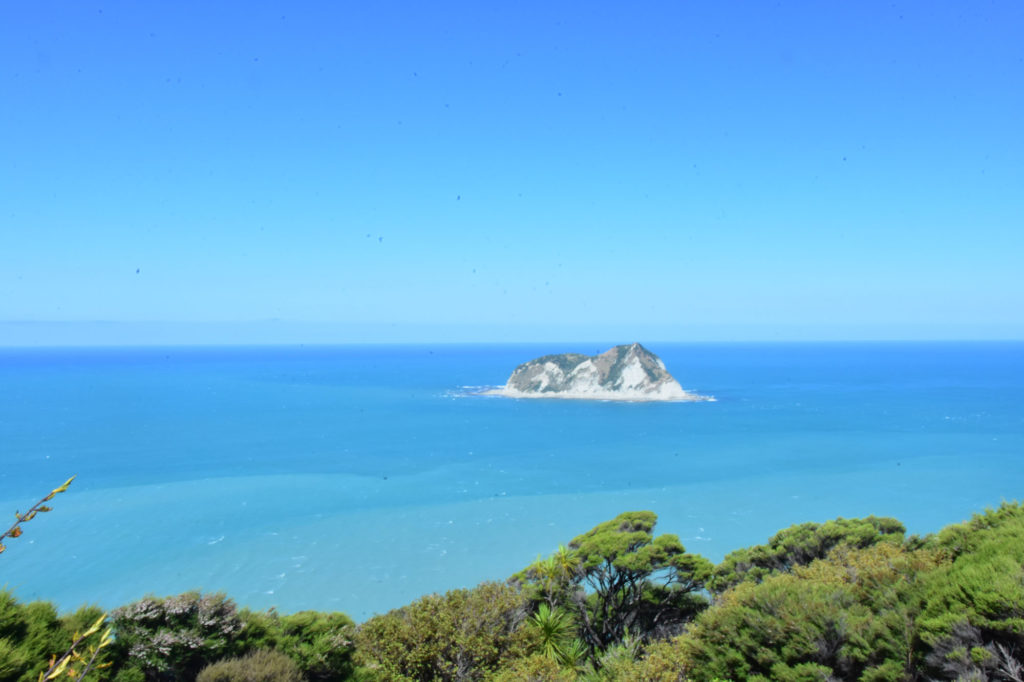
We were cycling the East Cape over New Years Eve, which was quite exciting. The East Cape is the most easterly point of New Zealand, which is the most easterly country in the world- so we would be the first to welcome in the new year, and the first to see the sun on New Years day. We camped up at a huge, grassy East Cape campsite which presides over a wide, empty beach, and spent an evening playing drinking games, slapping the goon, (which is when you down white wine from a plastic bag while everyone else chats, and give it a slap when you’ve had your fill) having a huge campfire, building giant beach structures, and skinny dipping at midnight. It was a perfect new years.
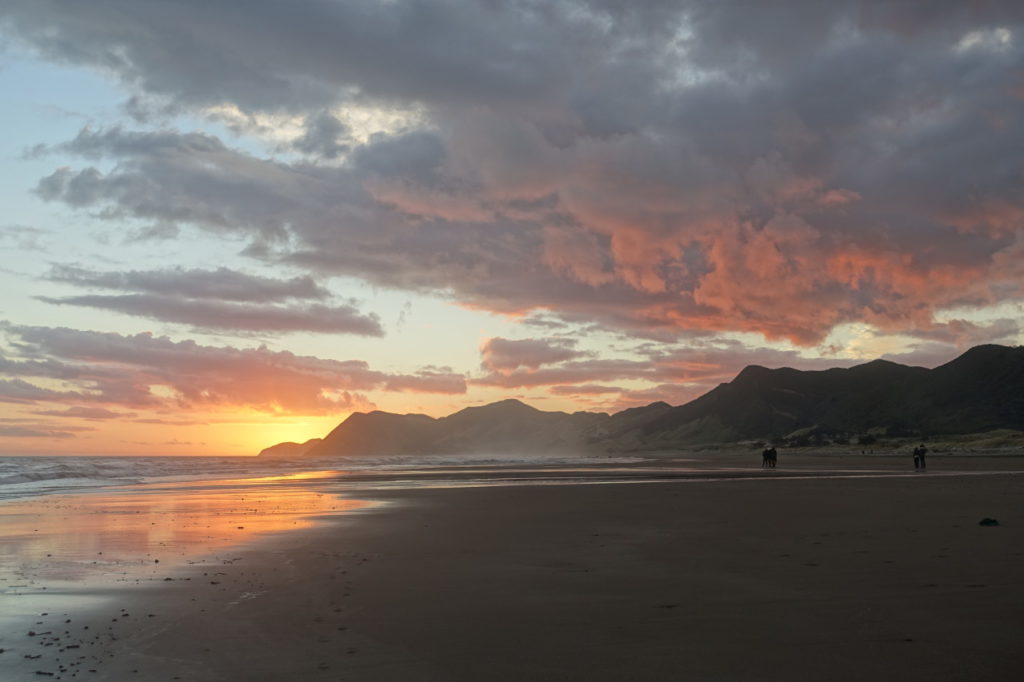
The next stage of the trip was spent cycling from the Eastern-most point to Gisborne. We spent more time climbing the wild, empty hillsides and through flat fields of farmland, dropping down gravel roads to secluded bays to camp. On one of these, a particularly long gravel descent of 3km, a rouge bull startled by the unexpected appearance of 20 cyclists, started to give chase. Some of us sprinted faster down the hill to escape, praying we wouldn’t fall on the sliding gravel surface; and some had to hide behind a gate until he passed back up the hill, snorting in fright. Our last day into Gisborne was a particularly fun one, with a gale-force tail wind and long, easy descents along a wild, surf-frilled coast.
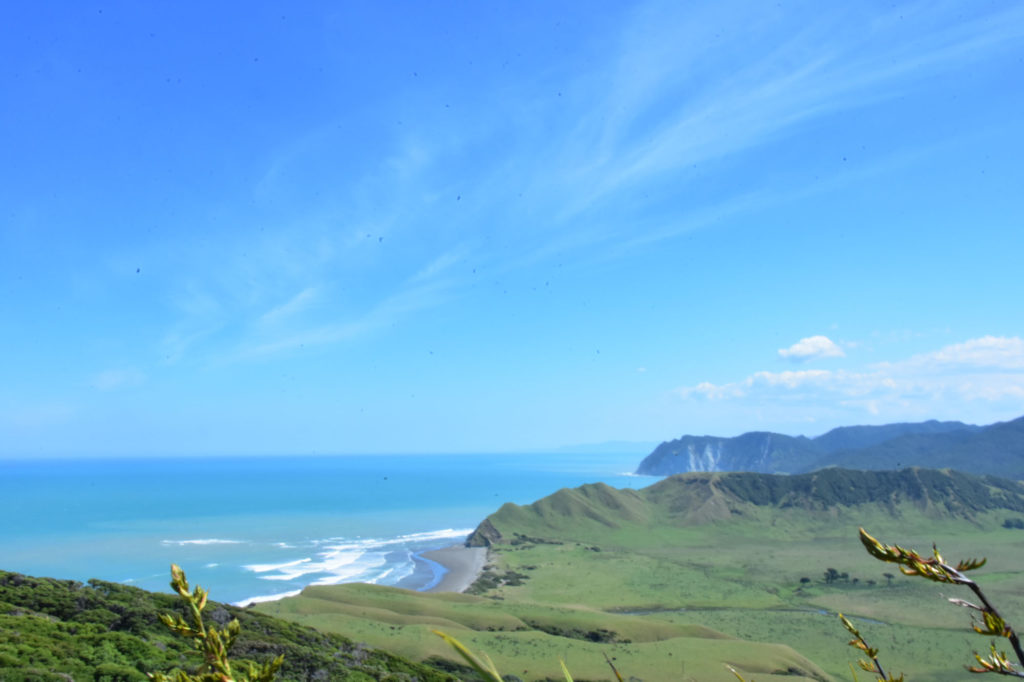
One of the best things about this trip was seeing Maori culture alive and well on the East Cape. We passed beautifully carved Marae (Maori meeting houses) in each small community we passed, and also stopped at the incredible church in Tikitiki, which is a crazy mixture of Christian and Maori artwork; Maori wood carvings and woven grass tapestries, and Christian stained glass and statues. We got chatting to people from Maori communities, adorned in traditional facial tattoos, who were incredibly friendly, offering us their Marae to sleep in. We met others who lived from the sea, fishing Paua and crayfish from the ocean each day and cooking it on a fire on the beach for supper. It was a really great experience to get a chance to experience this culture in an area where it is still strongly influential.
